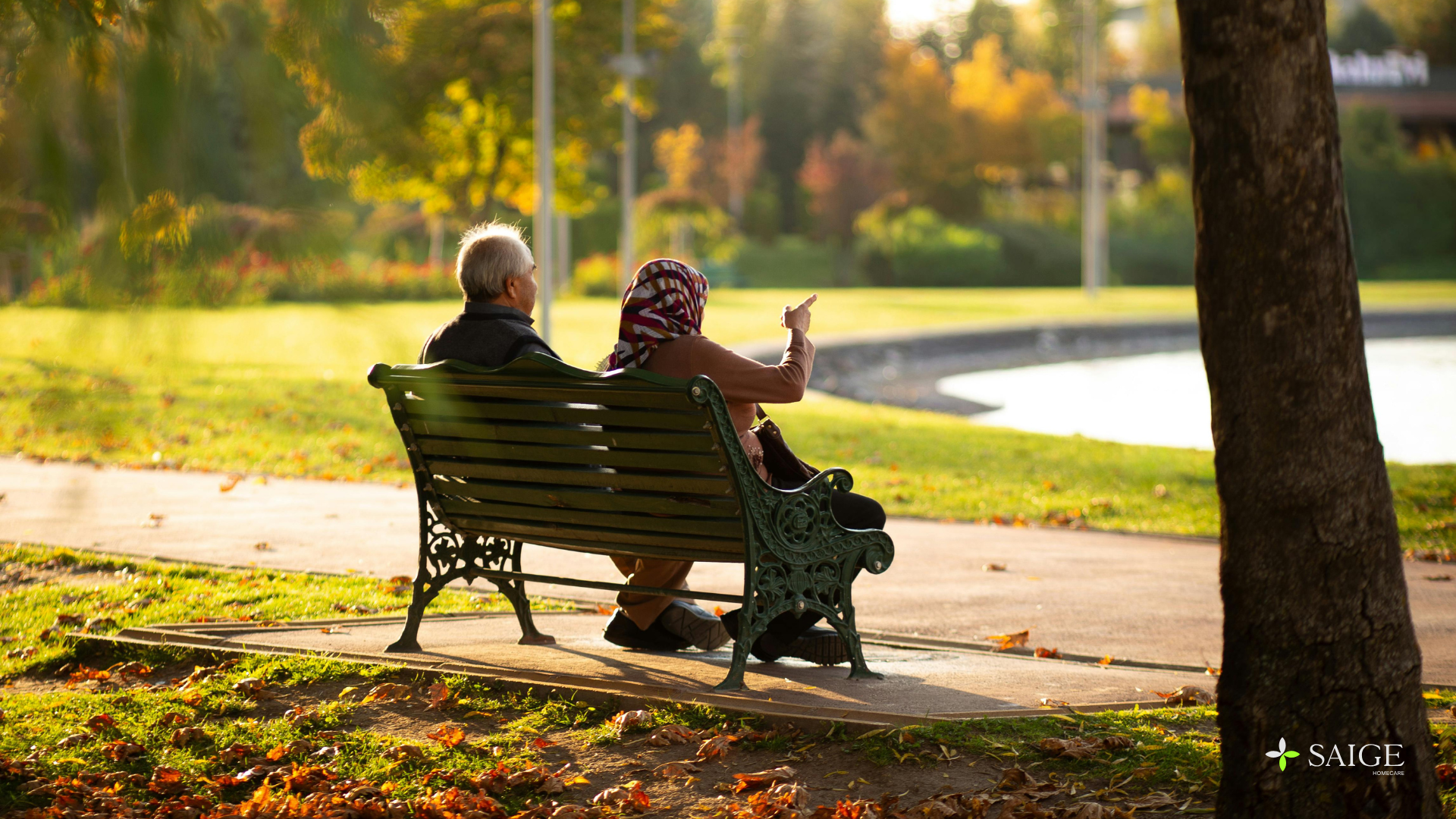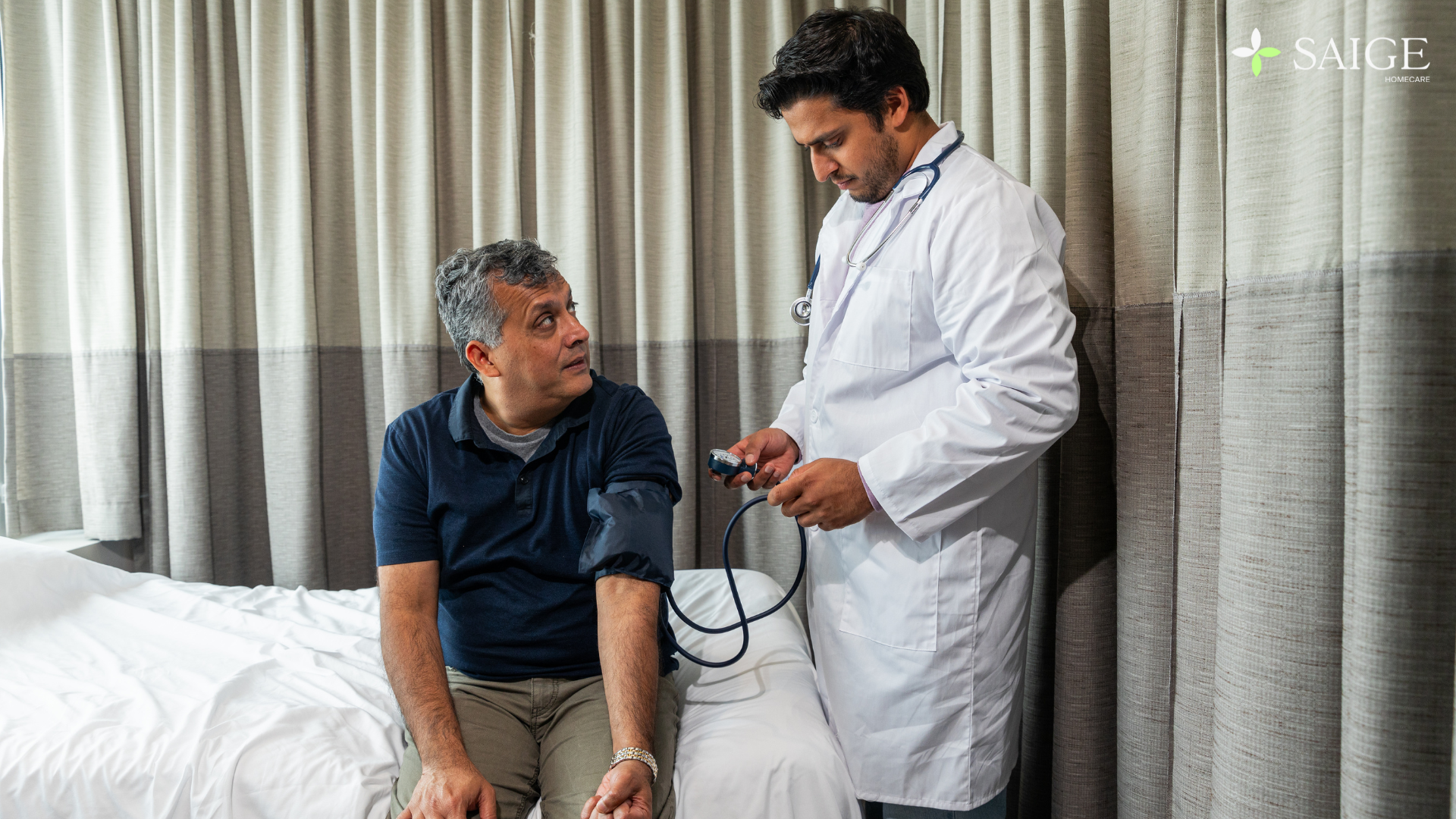Arthritis can make even simple things like getting up, reaching for things, and walking feel harder than they should. The right kind of movement can change that. Gentle, easy exercises you can do at home help keep your joints flexible, your muscles strong, and your days a little more comfortable.
Across Alberta, more than 620,000 people live with arthritis, and here in Calgary, staying active year-round is something many people are working toward.
The good news? You don’t need a gym or fancy equipment; just a few simple, at-home movements that fit easily into your day.
Here are some gentle exercises that can help you move with less pain and more confidence, right from the comfort of home.
Safety First: How to Exercise with Arthritis Like a Pro
Before jumping into any new exercise, it’s important to set yourself up for comfort and safety. When you have arthritis, the goal isn’t to push harder; it’s to move smarter.
1. Get the green light
If you’re starting after a long break, or you have other health conditions, check in with your doctor or physiotherapist first. They can suggest what’s safest for your specific type of arthritis, whether it’s in your knees, hips, or hands.
2. Know the difference between pain and discomfort
A little discomfort while moving is normal, especially if you haven’t exercised for a while. But sharp or lingering pain is your body’s way of saying “stop and rest.”
A good rule of thumb: if the soreness fades quickly once you stop, it’s likely just your muscles waking up. If it lingers or gets worse later, skip that movement next time.
3. Focus on posture and alignment
How you move matters more than how much you do.
- Keep your spine tall and your shoulders relaxed.
- When doing any lower-body work, keep your knees behind your toes.
- Move slowly and with control, count “one…two” up, “one…two” down.
4. Create a safe workout space
Clear the area around your chair or mat so you don’t trip. Use a sturdy chair or countertop for balance support.
If you’re in Calgary and exercising indoors (especially during winter), choose a spot with good lighting and non-slip flooring. A simple yoga mat, sneakers, or grippy socks can add extra safety.
5. Hydrate and breathe
Drink water before and after your routine; even light activity can dehydrate you more than you think. And remember to breathe steadily; holding your breath can make movements feel harder.
6. Have support if you need it
If you have a caregiver or family member nearby, they can help set up your space, offer gentle reminders, or be there in case you need assistance. Having someone present can make exercising feel safer and more encouraging, especially when starting out.
The Exercise Framework: Strength, Balance, and Mobility
The key to managing arthritis isn’t pushing harder; it’s finding movements that work with your body, not against it. Your routine should include a mix of strength, balance, and mobility exercises. Each one supports your joints differently:
- Strength: Builds muscles that cushion and protect your joints.
Example: Chair squats or gentle arm curls.
- Balance: Keeps you steady and confident during daily activities.
Example: Standing knee lifts or shifting your weight side to side.
- Mobility: Reduces stiffness and keeps joints moving freely.
Example: Shoulder rolls, ankle circles, or gentle stretches.
A short session that includes a bit of each can make everyday movements: walking, climbing stairs, or getting up from a chair, feel easier and safer.
Gentle At-Home Exercise Routine for Seniors With Arthritis
You don’t need special equipment or a gym to keep your joints happy. This simple, joint-friendly routine can be done right at home in about 25–35 minutes. Move at your own pace, take breaks as needed, and remember, comfort over effort.
Below are four parts you can follow in order. Each one supports your body differently, helping you stay flexible, strong, and steady.
Warm-Up (3–5 minutes): Wake the Joints Gently
Before you start, give your body a few minutes to loosen up. A proper warm-up increases circulation and gets your joints moving safely.
- Shoulder Rolls (6–8 each way) – Roll your shoulders slowly up, back, and down. Reverse direction. Eases stiffness and improves posture.
- Wrist Circles (5–6 each direction) – Rotate wrists gently, both clockwise and counterclockwise. Warms up the hand and wrist joints.
- Side Reaches (4–6 each side) – Raise one arm and lean slightly to the opposite side. Stretches the ribs and side body.
- Hip Circles (5 each direction) – Hold a chair and make small, smooth circles. Loosens the hips and lower back.
- Toe & Heel Taps (10 each) – Alternate tapping your toes, then heels, while seated or standing. This helps your ankles and calves to be active.
- Gentle March (30–45 seconds) – March in place, lifting knees softly. Warms up the whole body and prepares you to move.
Tip: In colder Calgary mornings, take a few extra minutes to warm up; it helps ease stiffness before your main exercises.
Strength & Stability Block (12–18 minutes)
This is where you build the muscle support your joints need. Do one or two sets of 8–12 reps for each exercise, resting briefly between moves.
Lower Body
- Sit-to-Stand (Chair Squat): Sit at the edge of a sturdy chair. Push through your heels to stand, then lower back down slowly. Builds strength in legs and hips for daily independence.
- Hip Extensions: Hold a chair and move one leg straight back slightly, squeezing your glutes. Improves hip and spine stability.
- Seated Knee Extensions: While seated, straighten one leg out and hold for a second, then lower. Strengthens the quadriceps without pressure on the knees.
- Calf Raises: Stand tall, rise onto your toes, hold, and lower slowly. Boosts balance and ankle flexibility.
Upper Body
- Towel or Band Pull-Apart: Hold a towel at chest height, gently pull it apart, then relax.
Activates shoulders and upper back, supporting posture. - Biceps Curl → Press: Curl weights or water bottles toward your shoulders, then press forward (or overhead if comfortable). Improves arm strength for lifting and reaching.
- Row (Seated or Standing): Pull elbows back as if squeezing shoulder blades together. Strengthens the back and counteracts slouching.
- Towel “Wringer”: Twist a towel gently like wringing out water. Keeps wrists and fingers mobile.
Pro Tip: Move slowly; two seconds up, two seconds down, and focus on smooth, controlled motion.
Balance & Core (5–10 minutes)
These exercises help you stay steady and confident on your feet, a big plus during Calgary’s slippery winters.
- Knee Lifts (with or without towel tap): Lift one knee at a time, keeping your posture tall. Improves coordination and leg strength.
- Opposite Arm–Leg Reach (Seated or Standing): Extend one arm and the opposite leg, hold briefly, then switch. Engages your core and balance together.
- Heel-to-Toe Rocking: Holding a counter, lift onto your toes, then your heels. Trains ankle stability and balance control.
If you feel unsteady, keep a chair close or have someone nearby for reassurance.
Mobility & Cooldown (3–5 minutes)
Finish with gentle stretches to help your joints relax and prevent next-day stiffness.
- Neck Tilts: Gently tilt your ear toward your shoulder on each side.
- Seated Spine Rotation: Sit tall, twist gently to one side, then the other.
- Cross-Body Shoulder Stretch: Bring one arm across your chest and hold with the other.
- Chest Opener: Interlace hands behind your back (or hold a towel) and open your chest slightly.
- Ankle Circles: Rotate each ankle in both directions.
- Deep Breathing: Inhale through your nose, arms up; exhale through your mouth, arms down ×3.
Cooling down helps calm the joints and supports recovery, especially after longer routines.
How Often Should You Do These Exercises?
Consistency is more important than intensity. You don’t have to do everything every day; the key is to move a little bit, often.
Here’s a simple way to build your week:
- Warm-up & Mobility: Daily (even on rest days). Just 5 minutes in the morning can ease stiffness and get you moving comfortably.
- Strength & Balance Work: 3 to 5 days per week. Try alternating between seated and standing routines for variety.
- Full Routine (all four parts): 4 to 6 times per week. Aim for about 25–35 minutes total. Rest as needed and listen to your body.
- Rest & Recovery: Take a lighter day if you notice swelling or fatigue. On those days, focus on gentle stretching or deep breathing instead.
Over time, you’ll notice small but meaningful changes, like standing up from a chair more easily, feeling steadier on your feet, or having fewer stiff mornings. That’s your progress.
If you live in a place with colder winters, like Calgary, keeping up with these short indoor sessions can help you stay active and comfortable year-round. And having a caregiver or family member nearby can make staying consistent and safe even easier.
Progression Roadmap (12–16 Weeks)
(Building strength and confidence: slowly, safely, and steadily)
The best progress with arthritis-friendly exercise comes from consistency, not speed. You don’t need to do more every day; just a little better, a little smoother, and a little more confident as the weeks go on.
Here’s a gentle 3–4 month roadmap you can follow:
Weeks 1–4: Build the habit
- Focus on learning the movements and doing them correctly.
- Keep things light and comfortable; no weights needed yet.
- Start with 1 set of 8–10 reps per exercise.
- Rest between movements, and take a day off if you feel sore.
- If stiffness is worse in the mornings (common in Calgary winters), try your routine later in the day when your body feels warmer.
Goal: Move with confidence, not pain. Just showing up matters most right now.
Weeks 5–8: Add gentle strength
- Begin to add a light challenge, small dumbbells (1–3 lbs), water bottles, or a resistance band.
- Increase to 2 sets of 10–12 reps if you feel ready.
- Include a few standing balance exercises if you were mostly seated before.
- You may notice daily activities like climbing stairs or carrying groceries becoming easier.
Goal: Strengthen your muscles to better support your joints.
Weeks 9–12: Improve endurance and stability
- Keep using your light weights or band, but slow down your pace, count to 3 while lifting and 3 while lowering.
- Try adding brief holds (2–3 seconds) during leg lifts or squats for extra stability training.
- Focus on smoother transitions; from sitting to standing, from standing to balance, etc.
- Stay hydrated and stretch after each session.
Goal: Better balance, posture, and control.
Weeks 13–16: Move with confidence
- You might feel stronger and more mobile, celebrate that!
- Add small challenges:
- One extra set on select exercises
- Slightly heavier weights (no more than +2 lbs)
- A bit longer balance holds (5–10 seconds)
- If you feel any joint discomfort, reduce back to your last comfortable level.
Goal: Maintain progress without flare-ups. This isn’t about pushing limits; it’s about living comfortably active.
Remember: Everyone’s pace is different. What matters most is that you’re moving; even 15 minutes of gentle exercise at home counts.
And if you have someone helping you, like a family member or caregiver, ask them to track your progress or join you; it makes it more fun and keeps you accountable.
Exercises for Seniors With Arthritis to Stay Active at Home
Gentle exercise is about keeping your body moving in ways that feel good and safe. A few minutes of smart, steady movement each day can make daily life easier and more comfortable.
If you or someone you love needs a little extra support to stay active at home, SaigeCare is here to help. Our compassionate caregivers in Calgary can assist with safe exercise routines, mobility, and everyday care, so you can stay independent, comfortable, and confident right where you are.
👉 Learn more about SaigeCare’s home care services and take the next step toward easier movement and better living.
Related Reads
Rolе of Tеchnology in Еnhancing Homе Carе Sеrvicеs in Calgary
10 Signs It’s Time to Consider Professional Elder Care for Your Loved One
FAQs About Exercise for Seniors with Arthritis
How to prevent arthritis from getting worse?
Stay active with low-impact exercise, strengthen supporting muscles, and maintain a healthy weight. Protect joints during daily tasks, use heat/cold wisely, and follow your clinician’s plan; early treatment (e.g., DMARDs for RA) helps slow progression.
What is the best diet for arthritis?
A Mediterranean-style pattern; fruits, vegetables, whole grains, legumes, nuts, olive oil, and fish support weight control and reduce inflammation markers; limit ultra-processed foods and added sugars. Evidence suggests benefits for osteoarthritis and reducing the risk of rheumatoid arthritis.
What are 5 vegetables to avoid for arthritis?
None is routinely off-limits. “Nightshades” (tomatoes, potatoes, peppers, eggplant) are often blamed, but evidence doesn’t support avoiding them. Only limit foods that personally trigger symptoms.
How to lubricate stiff joints?
Move them gently and often; range-of-motion, low-impact aerobic, and light strengthening improve stiffness and comfort by promoting joint fluid and circulation. Warm up (or use heat) before activity and progress gradually.
Is it better to use heat or cold for arthritis?
Use heat for stiffness and chronic aching; use cold for acute inflammation or swelling. Many people alternate between both. Apply in short, skin-protected sessions and follow medical advice if symptoms persist.


